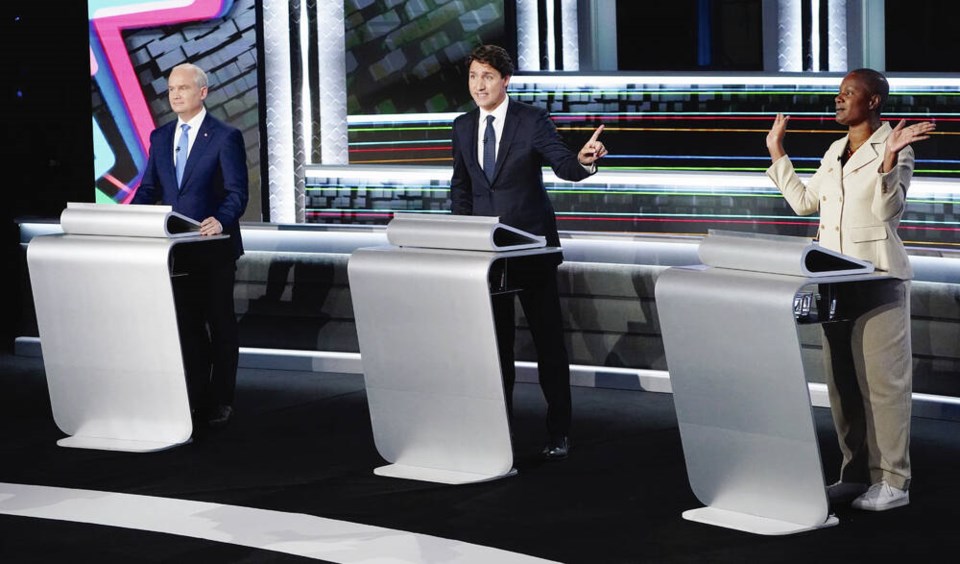With the federal election behind us and little to show by way of change, the question becomes: What happens next?
That question takes on additional weight because with the second minority government in a row, the likelihood of another campaign in fairly short order grows.
If that does happen, voters will want some form of assurance that a more definitive outcome can be reached next time around. This may well lead to pressure on some of the major parties to find new leadership.
Annamie Paul’s fate is perhaps the most easily predicted. After losing two successive attempts to win a seat in Parliament, the Green Party leader was reduced to a fourth-place finish on Monday, gaining just 8.5 per cent of the vote.
In the weeks preceding the election several leading party members, dissatisfied with her performance, mounted a campaign to unseat her. Eventually wiser heads prevailed, and a stay of execution was granted.
But with ex-party leader Elizabeth May stating publicly that she had “never seen the party so unprepared for an election,” the writing is surely on the wall.
There seems little chance that Maxime Bernier, who leads the People’s Party of Canada, will step aside. Though he himself failed to win a seat, and none of the PPC’s candidates were elected, the party’s share of the vote did increase, from 1.6 per cent to five per cent.
That should be sufficient to keep Bernier’s job safe for now. Though leading what is essentially a protest movement, he is never likely to regain the power he had as foreign affairs minister under Stephen Harper.
The NDP’s Jagmeet Singh also seems sure to remain party leader, assuming he wishes it. Depending on final counts, his party has increased its position by either one or two seats, from the 24 they held going into the election.
While that’s not an especially promising result, Singh led all party leaders in personal popularity throughout the campaign. The question now is whether he can translate this advantage into more significant gains at the ballot box.
That the Liberals will need NDP support to remain in office may give Singh the additional leverage he needs to boost his party’s standing.
Likewise there is little reason to suppose Bloc Québécois leader Yves-François Blanchet will step aside. His party has elected 32 MPs, and leads in two more ridings, which means basically no change in the status quo. Why normally savvy Quebecers continue to support a party that can never implement its agenda is a matter for another day.
The main question of the moment is what happens to Justin Trudeau and Erin O’Toole. In comments made after the election result was known, Trudeau indicated clearly he intends to stay on.
But is this the right decision, and can he sustain it? During the campaign the prime minister lost ground with key support groups, women in particular.
If we do indeed face another election in a year or two, will his party want to stay with Trudeau, or might there be a feeling that a fresh face is needed?
That decision may depend, in turn, on what happens to O’Toole. The Conservative leader can certainly make a case to keep his job. Nationwide, his party won more votes than the Liberals, and polls rated him more popular than Trudeau.
But the hard fact is that the socially conservative views in the party’s western stronghold failed to attract votes in central Canada or the Maritimes, and that is unlikely to change.
If the Conservatives are to win the next election, some of this baggage must be dumped. O’Toole did make an effort in this direction, but failed. He admitted as much after the election results came in. What the party needs now is a leader who is unassailably centrist — what used to be called a “Red Tory.” And ideally, one who hails from Quebec or the Maritimes.
The probable outcome then is that if O’Toole goes, there will be corresponding pressure on Trudeau to give way. One new face demands another.
However, if the Conservatives decide to stay the course, Trudeau is more likely to survive.



